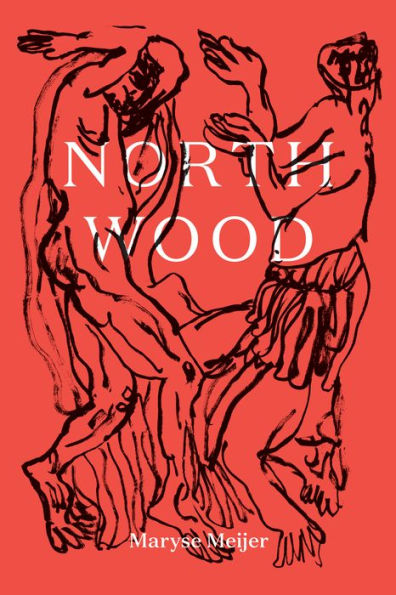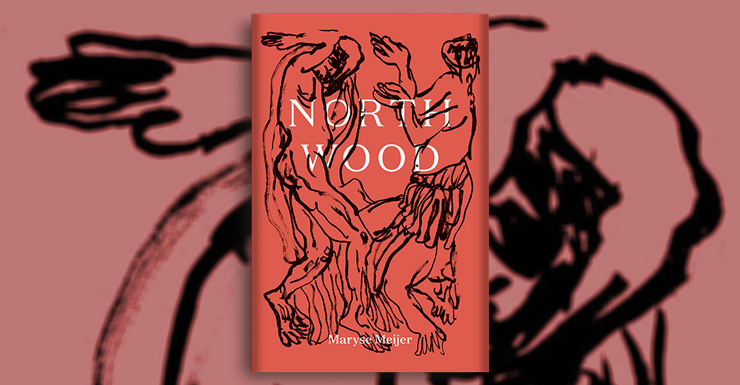For so long literature was dominated by the idea of the Huge Fat Novel with teeming casts of characters, multiple points of view, and overarching themes that Say Something About How We Live Now. The characters lives would often intersect with historical figures, to give the author a chance to show off their research. Sometimes the action would slip into the near future so we could get a taste of the Dystopia To Come. Sometimes there would be an Event that was so Important the author Capitalized Its Name. Often, the main character was a philandering male.
While these books aren’t always written by guys, they were emblematic of that intensely flag-planting type of masculinity that wanted to put their stamp on the hottest issues of their day. And to be fair, I love these kind of books. (I’m kinda sorta writing one of these kind of books at the moment.) But lately I’ve become much more interested in ‘smaller’ works—not in theme, but in length: books that act as scalpels cutting down to the bone of a story, and often pack a far more emotional punch than the hefty tomes that are usually called ‘important.’ Maryse Meijer’s dark fairy tale Northwood is one of these.
A lot of these smaller works are written by women and many, lately, draw on myth in different ways. Anne Carson’s Autobiography of Red, Maggie Nelson’s Bluets and The Argonauts, Rachel Cusk’s Outline trilogy, Mary Robison’s Why Did I Ever, a lot of Angela Carter’s work, a lot of Shirley Jackson’s work—they’ve all written novels and novellas that you can read in a single evening, but that will take up residence in your mind for weeks.
Meijer seems to be drawing on this tradition in her novella Northwood, which might be the most densely packed fairy tale riff I’ve ever read. The basic plot is straightforward: a woman goes to the woods to work on her art, but while she’s there she falls into a violent affair with an older man. The cabin she rents belongs to “the woodsman,” who seems to have no interest in her, but also craves glimpses of her encounters with her lover. Later on she looks back at the relationship, marries, nurses her mother, teaches art, and generally tries to make the episode a part of her past. It doesn’t sound like the sort of story that would be covered on a website that specializes in speculative fiction, but Meijer has taken this skeleton and created a phantasmagoria, characters that can become different fairy tale characters over the course of a single sentence. And she isn’t just plugging a few references in, what she’s doing is taking the fairy stories we learned as children to their natural conclusions, looking at the violence coded in them, and looking at how they can shape every aspect of the woman’s feelings for a man. The stories of the relationship and its aftermath are fractured across time, so you have to piece the arc together as you read. This heightens the tension, and forces us to experience the woman’s lasting trauma and desperation the way she does, as a thing that is always present in her mind, that has changed who she is and how she views herself. Meijer uses stereotypically feminine markers, weaving tarot card characters around familiar fairy tales, myths, and fables.
If we agree that part of the purpose of fairy tales was to educate young girls of the dangers of men (Little Red Riding Hood, Bluebeard) the need to love and obey their husbands no matter what (Beauty and the Beast, Hans My Hedgehog, Bluebeard again) or to encourage them that there was a life beyond their overbearing mother-figure (Cinderella, Rapunzel) then we can also see what a skewed arrangement these stories give us. The men are either grunting beasts or statuesque royalty, but there’s no companionship, no friend-turned-lover, no courtship—just the terror of making a life with an unknowable man who is larger than you, stronger than you, and who holds absolute dominion over your rights and economic status. Meijer gives u a modern version of this where a young woman who feels that she’s ever been in love falls hard for an unknowable man. He’s older, sure of himself, completely open about being married. They start hooking up immediately, and he swings wildly between tenderness and violence. But where Meijer does something gloriously new with the story is that it’s the violence our narrator craves. She’s not a shrinking violet medieval peasant girl, or a maiden sold off in marriage to a brute; she chooses this relationship, and uses it to dive into her own desires. But! This is also not really a BDSM story, because what both of the characters seem to want most is the danger to be found beyond the safewords, contracts, and agreements of a love based in kink. It’s an interesting line to walk.
In a chapter titled “Once” Meijer skips through half a dozen different tales to create an overview of the entire story:
After you’d gone she’d think ravished,
good, she laughed and cracked
her knuckles splashed in the sheet
counted the marks on her arm.
The mirror told her she was beautiful
no matter how bruised how changed.…No beasts at all in the city
no bats no nothing
maybe some tanked fish in a Chinese restaurant that’s it.
She sat outside with a piece of steak
waving it raw in the night—
Here, fox, she cried. Here, dragon-dragon—
cursed the tame things that came instead…
Sometimes the narrator seems baffled by her own obsessions, and draws on Ovid’s Metamorphoses as another touchstone. This casts the whole book in an even darker shade, as Ovid’s story is essentially about violation, and features tale after tale of women turning into trees and animals to escape attempted rape. She revisits “Daphne” several times, first seeing her as a sort of victim/muse:
Her back against me catching her
deep breaths. Naked she was smooth as pith
hair caught in a branch I pulled it free.
The women kneel at the root I watch.
How determined they are to bleed. Apollo’s gold eyes
didn’t dazzle me I
prefer the stream she opens her book and learns her trees
the flies are heavy this time of year she
combs them from her
bangs at night she’s thinking more and more
how to
escape it should she escape
where’s your daddy I asked
isn’t he a god
But later, after the relationship ends, identifying with her completely:
And yet because he touched me
I am this.
Buy the Book


Northwood: A Novella
On a certain level it seems to be the woods themselves that the narrator is in love with, which also plays on some potent imagery. She’s gone off the path, chosen the forest, is abandoned by the woodsman, and invites the Wolf/Beast/Bluebeard/Fox right into her home. She is also the violator at times, however, because as an artist she draws her lover, over and over again, and it’s clear that he hates how she sees him. Instead of the usual story of women being objectified, she’s the objectifier, she’s the one appraising and capturing flesh, and remaking her lover and presenting her version of him to the world. But even this is complicated when we learn that the man is a writer. He writes their affair into a novel, strips all the violence out of it because “it wasn’t about that,” and then tells his interviewers that it’s all a fiction.
Retreating to marriage and the suburbs isn’t actually an escape, though, how could it be? When there are just as many stories told there of how women ought to be.
ECHO
I’ll never get used to
seeing
house after house after house
the lawns
like dark jewels in the evening
between them. The way trees
stand shy so far apart
and the sky
halved of its stars—
Where are our stars? Our evenings? Our trees?
Good ghosts
tucked inside their mirrors,
haunting as quietly as they can.
Meijer relentlessly shows us that the secure, banal world the narrator lives in in the present isn’t any safer or more permanent than the time in the woods. For all that she seems to want it to be a dream or a nightmare, it is, in many ways, far more real than the life she builds later on, as a more mature adult. Those months in the woods will always be part of her, and she will never be free of them. At the same time Meijer doesn’t present this as a bad thing. The narrator’s time in the woods formed her, in some ways she controlled the narrative and in some she did not, but in the end it’s still her fairy tale to tell. Like the best fairy tales, Northwood shows us the clockwork that lies beneath society, but like the best modern fiction it asks us to confront our own acceptance of that society. It nudges us off safe paths and urges us further and further into the woods, and there isn’t a breadcrumb in sight.
Northwood is out now from Catapult.
Leah Schnelbach thinks the dark and perilous woods get a bad rap. Come, stray from the path with her on Twitter!










